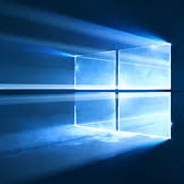
As I write this in the second week of September and only 6 weeks after Microsoft released Windows 10 to the world, it is being estimated that there must be approaching 100 million users already. That’s a fairly staggering number. It has been stated by Microsoft that their goal is to get Windows 10 running on over a billion devices within 2 or 3 years. So, if they are nearly 10% of the way there in only 6 weeks, I think they’ll be pretty happy – euphoric even!
However, in the same 6 weeks, I’ve had 4 clients call me to report problems after – or during – their Windows 10 upgrade. Now, out of my limited client base, I can’t believe any more than a hundred users have even tried the Windows 10 update which makes the problem rate about 4% and surely that is worryingly high. Even if my client base is far from typical and the percentage of users having problems in the wider community is much less, even 1% could mean 1 million unhappy users worldwide already. So maybe, Microsoft aren’t quite in euphoric mood yet.
The general view however, seems to be that this has been the biggest and least criticised launch of a Windows Operating System for a very long time. Even XP had a lot of criticism at its initial release.
So should you take the plunge or not? The first thing I need to point out is that there is absolutely no hurry. The operating system will be available as a free update to qualifying Windows 7, 8 and 8.1 users until next July. By that time we will all have a much better idea of its strengths and weaknesses and there is rumoured to be an ‘interim release’ (Windows 10.1 ? ) being prepared for October this year. I’d say let the dust settle and plan to do it sometime after Christmas.
The other important piece of advice is that you really need to go into this with eyes open and fully aware of the risks. There is always stuff on your computer which is of great personal value to you – photos, emails, drawings, contracts, invoices, legal documents, whatever. You DO have these safely backed up – yes? Large upgrades can and do go wrong. In fact Microsoft’s track record with large updates hasn’t been all that good over the years. You may be one of the 1% that fail. And what happens if you end up with a PC which won’t start up again – at all. No way forward – and possibly no way back.
So, I won’t be doing this upgrade on any of my clients’ computers without having a full disaster recovery backup and the ability to put it all back the way it was before they gave it to me – no matter what damage has been done by the upgrade process. You need to have your Plan B ready even if you hope you never need it.

